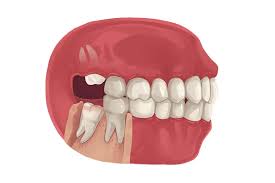
Breaking News
 Year-Over-Year Existing Home Sales Disappoint In November, Decline Most In 6 Months
Year-Over-Year Existing Home Sales Disappoint In November, Decline Most In 6 Months
 Loss Of Credibility: Yen Craters, Yields Surge After BOJ Hikes Rates To Highest Since 1999
Loss Of Credibility: Yen Craters, Yields Surge After BOJ Hikes Rates To Highest Since 1999
 DOJ Releases Epstein Files, And [REDACTED]
DOJ Releases Epstein Files, And [REDACTED]
 Putin Identifies The Main Issue Which Will Settle Ukraine War In Year-End Q&A
Putin Identifies The Main Issue Which Will Settle Ukraine War In Year-End Q&A
Top Tech News
 This tiny dev board is packed with features for ambitious makers
This tiny dev board is packed with features for ambitious makers
 Scientists Discover Gel to Regrow Tooth Enamel
Scientists Discover Gel to Regrow Tooth Enamel
 Vitamin C and Dandelion Root Killing Cancer Cells -- as Former CDC Director Calls for COVID-19...
Vitamin C and Dandelion Root Killing Cancer Cells -- as Former CDC Director Calls for COVID-19...
 Galactic Brain: US firm plans space-based data centers, power grid to challenge China
Galactic Brain: US firm plans space-based data centers, power grid to challenge China
 A microbial cleanup for glyphosate just earned a patent. Here's why that matters
A microbial cleanup for glyphosate just earned a patent. Here's why that matters
 Japan Breaks Internet Speed Record with 5 Million Times Faster Data Transfer
Japan Breaks Internet Speed Record with 5 Million Times Faster Data Transfer
 Advanced Propulsion Resources Part 1 of 2
Advanced Propulsion Resources Part 1 of 2
 PulsarFusion a forward-thinking UK aerospace company, is pushing the boundaries of space travel...
PulsarFusion a forward-thinking UK aerospace company, is pushing the boundaries of space travel...
 Dinky little laser box throws big-screen entertainment from inches away
Dinky little laser box throws big-screen entertainment from inches away
 'World's first' sodium-ion flashlight shines bright even at -40 ºF
'World's first' sodium-ion flashlight shines bright even at -40 ºF
Wisdom Teeth Contain Unique Stem Cell That Can Form Cartilage, Neurons, and Heart Tissue

But an astounding new discovery has found that this third set of molars contain a unique form of human stem cell that can be harvested and used to regrow bone, heart tissue, and even neurons.
It's an exciting field full of promise, full of potential benefits, but substantial amounts of further research and evidence is needed to truly understand what these four extra teeth could do for us in the long term beyond tearing up almonds and salad.
For starters, wisdom teeth contain a soft center of tissue called dental pulp that keeps the tooth alive. This pulp contains immature cells which a team of scientists at the University of the Basque Country in Spain have transformed into several different kinds of cells.
Dr. Gaskon Ibarretxe, an associate professor in the Cell Biology and Histology Department at the university, led a recent study that turned pulp cells into electrically excitable pseudo-neurons that demonstrated "essentially electrical activity" in concert with proper neurons.
They could help treat damaged brain circuitry from any number of conditions or trauma.
According to Earth.com, pulp-derived stem cells have some interesting and unique properties, including the capacity to build mineralized tissue faster than bone marrow-derived stem cells. Scientists have used dental?pulp secretions to improve heart ejection fractions in mice with heart failure, and in vitro, these cells seem to lay down layers of collagen and calcium in neat, orderly sheets, making them potentially attractive for joint cartilage repair.
From the logistics and cost standpoint, they're an ideal source of stem cells. Bone marrow cells require painful injections that sometimes can't involve anesthesia, while embryonic or placental stem cells without ethical concerns require someone to decide to have a baby.
By contrast, almost all humans are born with wisdom teeth, and they're often removed in the teenage years when little DNA damage has taken place inside the dental pulp; making them exceptionally malleable and safer.
Earth.com claims 10 million wisdom teeth are removed every year, but the process of sending them to a biobank could be very simple. A kit—offered by a company like Stemodontics—could be bought and shipped to a dentist's office ahead of the procedure. The tooth is put in a vial, placed on dry ice, and rushed to a lab where the pulp would be extracted and preserved as a potentially life-changing form of cellular insurance.



